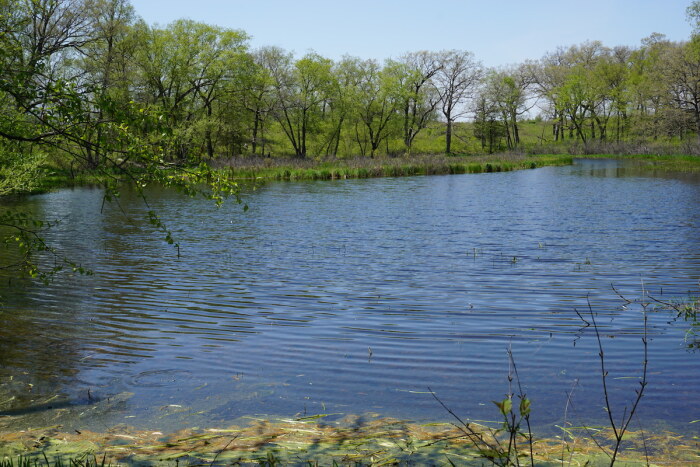Wally Taylor is the Legal Chair of the Sierra Club Iowa chapter.
In a May 25 decision, the U.S. Supreme Court greatly restricted the jurisdiction of the U.S. Environmental Protection Agency and the Army Corps of Engineers to protect wetlands under the Clean Water Act.
The Clean Water Act gives the agencies authority to protect “waters of the United States,” known as WOTUS. Constitutionally, the EPA and the Corps have jurisdiction over waters that affect interstate commerce. Certainly, interstate rivers like the Mississippi and the Missouri affect interstate commerce. And no one seriously argues that rivers and streams that flow into interstate rivers are not within the EPA’s and the Corps’ jurisdiction. But what about wetlands?
The Clean Water Act defines wetlands as “those areas that are inundated or saturated by surface or ground water at a frequency and duration sufficient to support, and that under normal circumstances do support, a prevalence of vegetation typically adapted for life in saturated soil conditions. Wetlands generally include swamps, marshes, bogs, and similar areas.”
The Act also defines waters of the United States to include wetlands that are adjacent to rivers and streams. Over the years, though, agricultural interests and developers have contested the meaning of WOTUS with respect to wetlands. They want to drain or fill in—that is, destroy—some wetlands.
In an effort to comply with the Clean Water Act, the agencies have adopted administrative regulations, known as the WOTUS rule, to clarify which wetlands are entitled to protection under federal law. The rule was consistent with a 2006 U.S. Supreme Court ruling by former Justice Anthony Kennedy. So it is hardly a liberal socialist idea.
Justice Kennedy determined that any water with a “significant nexus” to a navigable water is covered by the Clean Water Act and therefore subject to protection under that law.
In order to put the significant nexus requirement into scientific terms, the EPA and the Corps convened a committee of scientists, at least two of whom were from Iowa State University, to accomplish that task. That committee issued a 300-page report, which formed the basis of the Obama administration’s WOTUS rule.
Then the agencies undertook an extensive and lengthy process before adopting the rule, gathering information from stakeholders from every perspective. More than one million comments were received, and there were over 400 meetings with diverse stakeholders. So the WOTUS rule was not an arbitrary political decision. It was a legally and scientifically-based regulation to protect water quality. And contrary to the scare tactics we have seen from agricultural interests and politicians, the WOTUS rule exempted most agricultural practices.
Nevertheless, several states, including Iowa, sued to overturn the WOTUS rule and were able to halt its enforcement pending the litigation. Then the Trump administration rescinded the rule and issued a new, more industry friendly one.
Under President Joe Biden, the EPA replaced the Trump regulation with language similar to the WOTUS rule. Now five Supreme Court justices have held that rule does not comply with the Clean Water Act, and that Justice Kennedy’s significant nexus requirement was wrong. Last week, the court’s majority held that the Clean Water Act “extends to only those wetlands with a continuous surface connection to bodies that are waters of the United States in their own right, so that they are indistinguishable from those waters.”
According to that standard, many, if not most, wetlands will not be covered under federal law. Wetlands filter pollution, provide flood mitigation, and provide habitat for many species, to name just a few benefits.
Although states can still protect wetlands from destruction, the current political climate in Iowa does not bode well for our state’s wetlands. For years, Iowa Republican politicians have falsely claimed protecting wetlands would put farmers out of business, and that the federal government was trying to regulate every little puddle or tire rut after a rain. That’s their usual tactic of lies and fake outrage.
Everyone knows, even if some won’t admit it, that Iowa has a serious water quality problem. The recent Supreme Court decision will compound those challenges. Democrats need to use this issue in upcoming campaigns.
Editor’s note from Laura Belin: For more legal analysis of the Supreme Court decision in Sackett v. EPA, see Amy Howe’s reporting for SCOTUS blog and this E&E News article by E.A. Crunden, Pamela King, and Ariel Wittenberg.
Top photo of Ciha Fen in Johnson County taken by Pam Mackey Taylor and published with permission.


2 Comments
Thanks to Laura
for linking to the SCOTUS Blog and E & E articles for more depth. I was trying not to get into the (hydrophytic) weeds and focus more on the political ramifications.
Wally Taylor Tue 30 May 9:47 AM
Wetlands are the kidneys of the landscape
If a judge were to appear before a convention of doctors and announce that legally, kidneys are not part of or connected with the rest of the human body, I can only imagine the reaction.
This SCOTUS decision is in conflict with physical, chemical, and biological realities. Even some grade school kids know, though in simpler language, that wetlands are hydrologically connected with rivers and streams.
Thank you, Wally Taylor.
PrairieFan Tue 30 May 8:54 PM